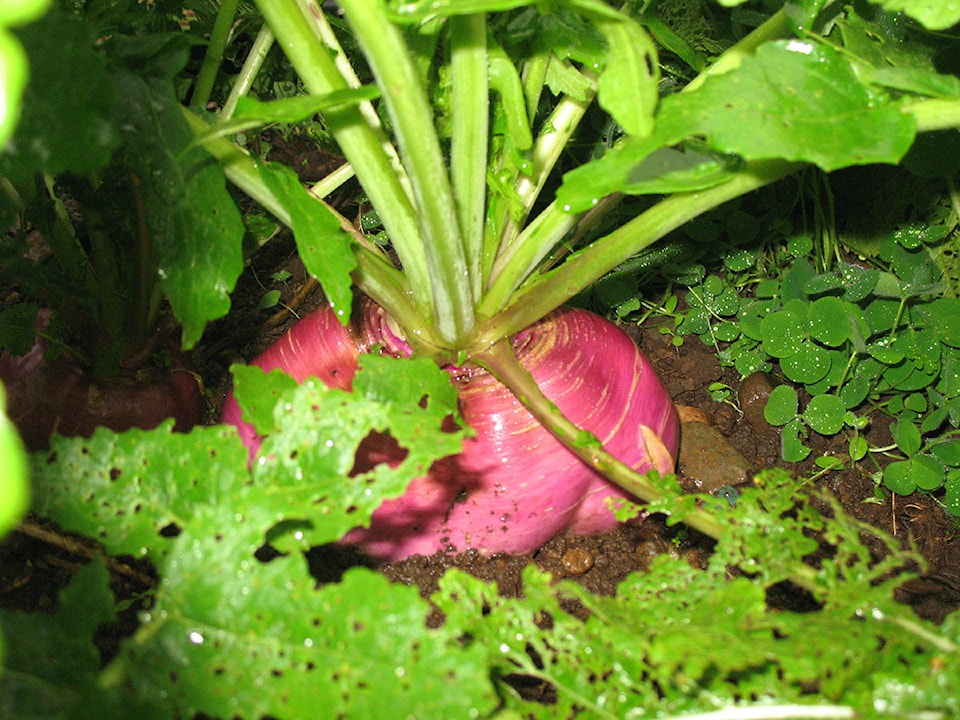By Mary Lowther
I’m preparing the garden for winter. I’ve pulled out all the corn and set out the last of the ears to dry in a cool room for next year’s seed. This past summer I planted Sunnyvee and Golden Bantam varieties in separate beds and some must have cross-pollinated, but since we like both varieties that won’t be a problem. Golden Bantam is that old style of corn that has a nice meaty quality but the sweetness turns to starch within a few hours so commercial growers don’t grow it anymore. Sunnyvee stays sweet a bit longer and has a robust taste as well, but neither are the supersweet variety.
I processed some of the corn earlier in the season when it was still sweet and juicy and put the cut off kernels in the freezer. I’ll chop the stalks into 12 inch lengths for the base layer in the compost heap. In the meantime, I’ve hoed out all the weeds and sown crimson clover and fall rye as a cover crop, raking that in. I’ve noticed that the birds aren’t showing much interest in my garden these days so I guess they’re getting their fill of wild seeds and insects so I won’t bother to cover the seeds and keep my fingers crossed. I’ll get out the birdseed once my cover crop is up and encourage the birds back to the yard for winter.
I’ve harvested the last of the beans to dry for winter use and as seed for next year’s crop. I grew several varieties but I think my favourite is Uganda Bush Beans. In its green bean stage it is stringless with a rich flavour and it was so tasty two years ago that I only managed to save enough seed for replanting this year. This year I grew more, so I’m looking forward to trying the dry bean which, I’m told, is also very good. I dry beans in the pod and then put them in a pillowcase and smash them to separate the beans out.
Cabbage, carrots, beets, turnips, lettuce, spinach, parsley and leeks will stay in the garden until we have a hard frost. I stopped covering plants in the garden to extend the season because slugs proliferate and eat everything under the plastic, so if any of these plants start to suffer in the cold, I’ll pull them out and store them in the cool pantry that David built for me. He spoils me and I’m good with that. Of course, he eats the food so it’s in his own best interest. One of my turnips has gotten away on me and it’s almost as big as a pumpkin! Now I see why they used to carve a turnip for Halloween.
I brought the pumpkins inside and will cure them in a sunny area for two weeks before I coat them with a bit of oil and store them in a room-temperature area. They last very well this way until spring.
I pulled off all the mulch and tossed it into the compost pile because mulch, too, harbours plagues of slugs and sow bugs. Instead I’ve sown cover crop over all bare soil and they should grow somewhat before the hard frost, holding nutrients in their bodies and preventing rain from washing them out over winter. Next spring I’ll dig them under while they are still succulent and easy to dig.
I’ll side dress the vegetables staying in the ground with a last application of organic fertilizer, although I don’t expect much more growth this year. Peppers will remain in their plastic tent until frost kills them, but next year I might put a couple of containers of water inside the tent to retain heat. When the leaves get raked up I’ll pile these up along with all the spent vegetation and then it will be time to put the compost heap together.
Please contact mary_lowther@yahoo.ca with questions and suggestions since I need all the help I can get.
